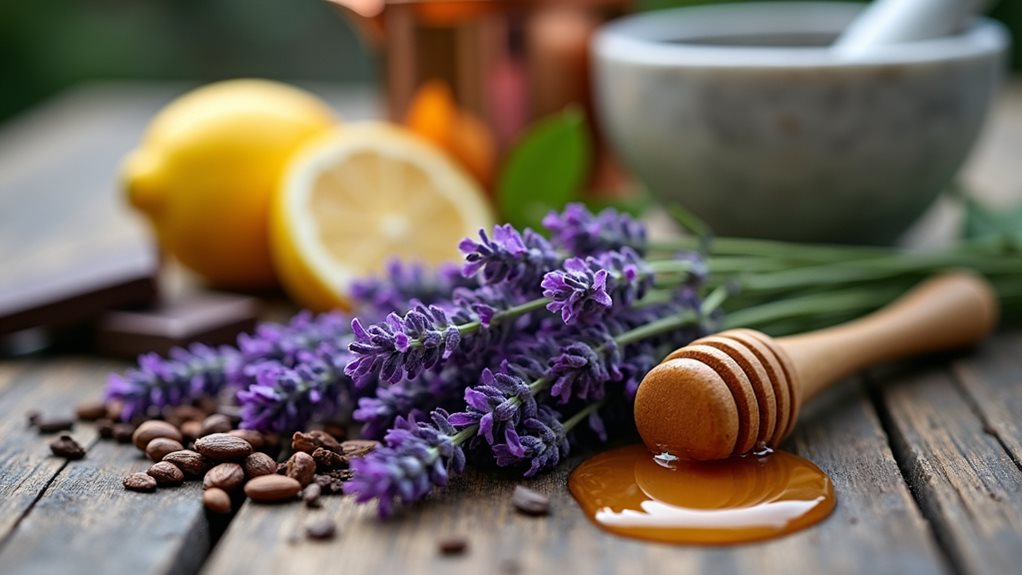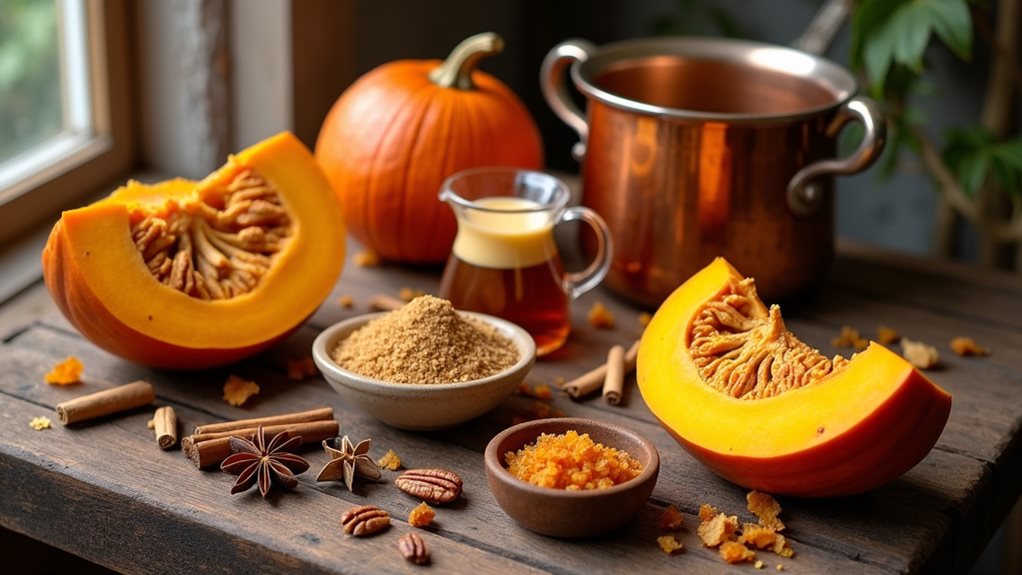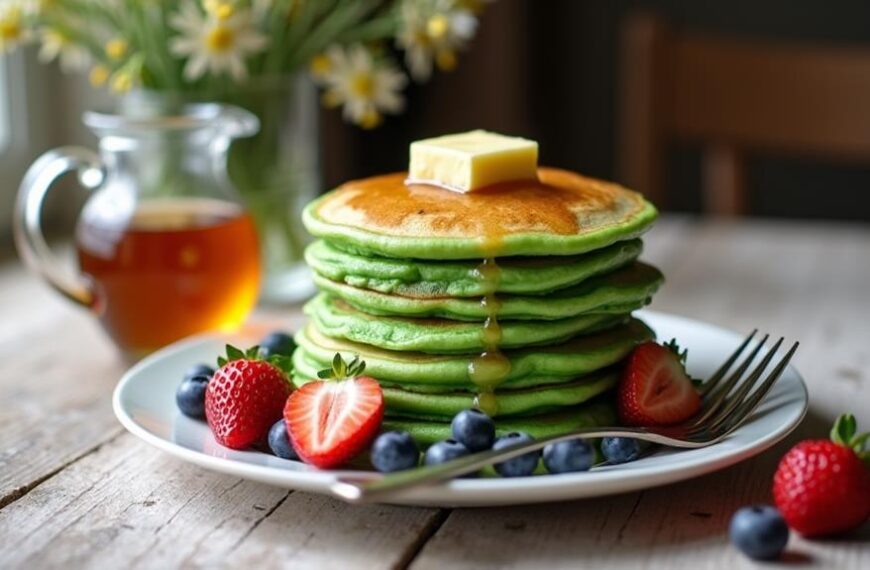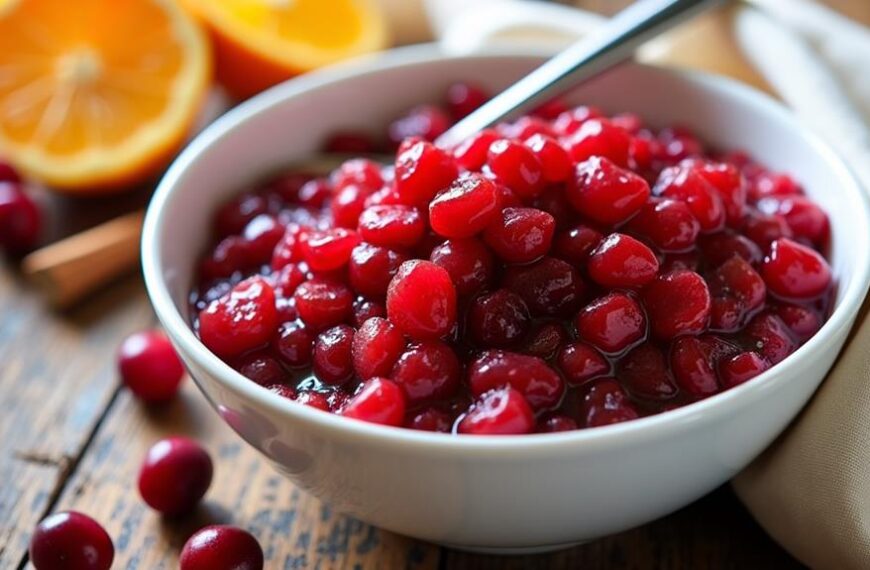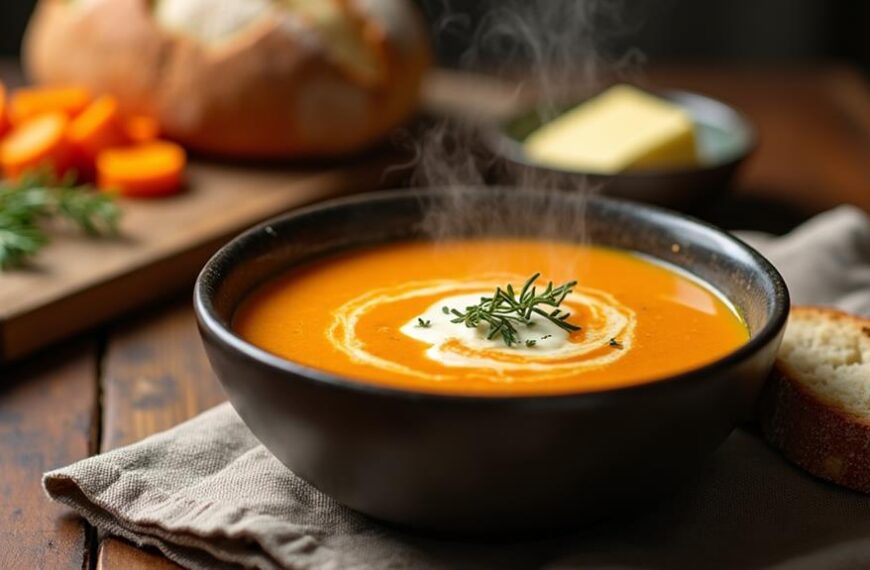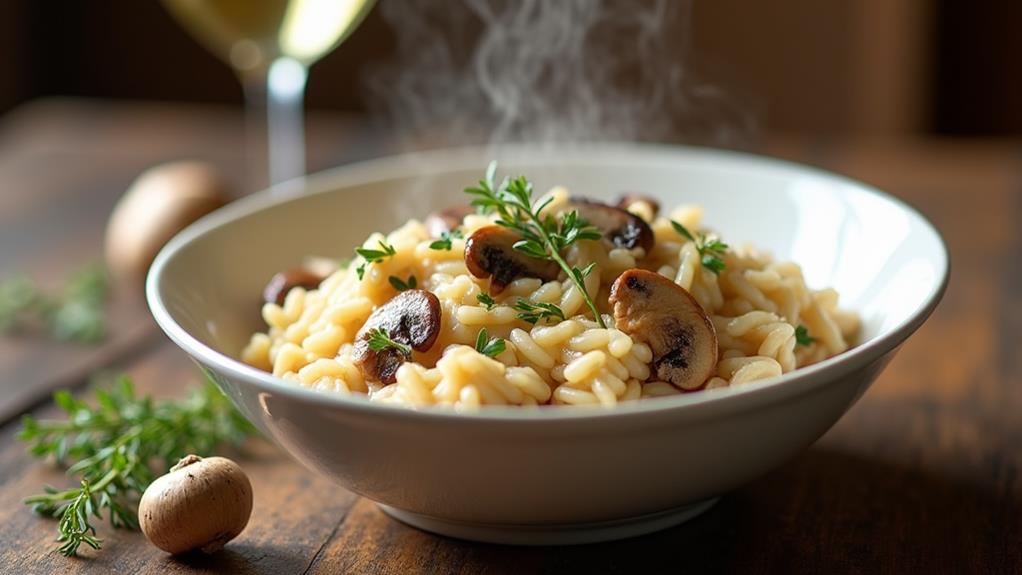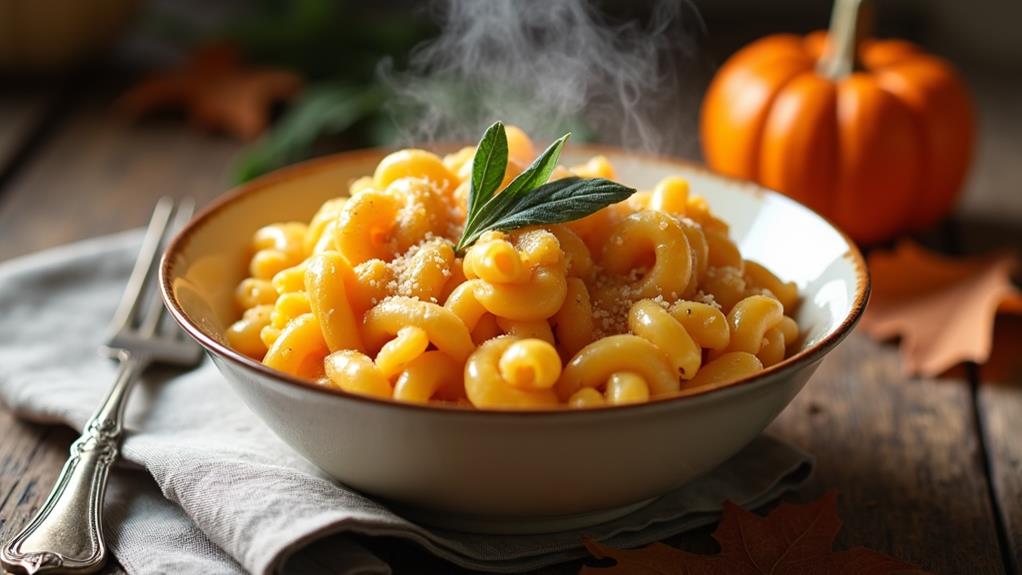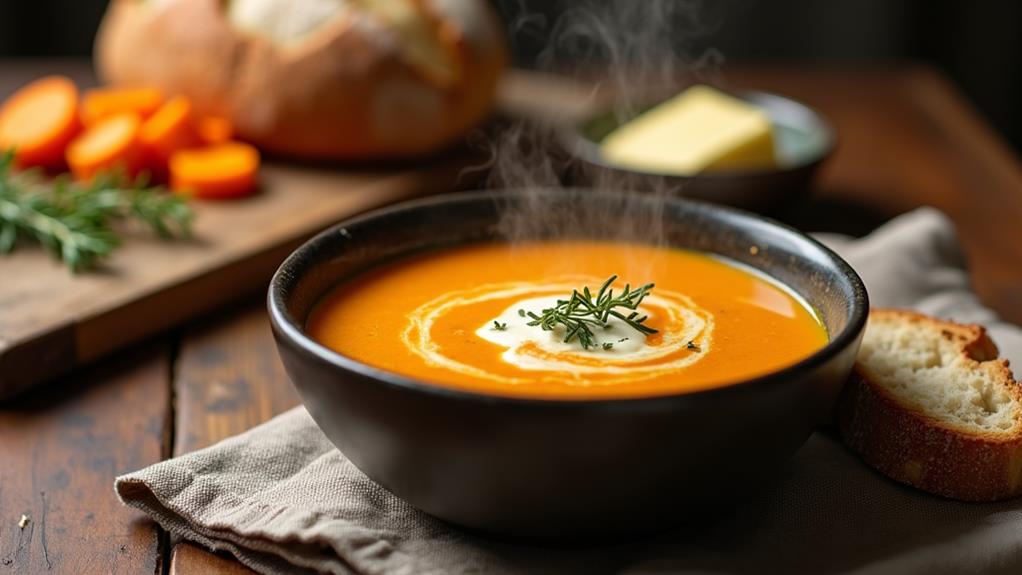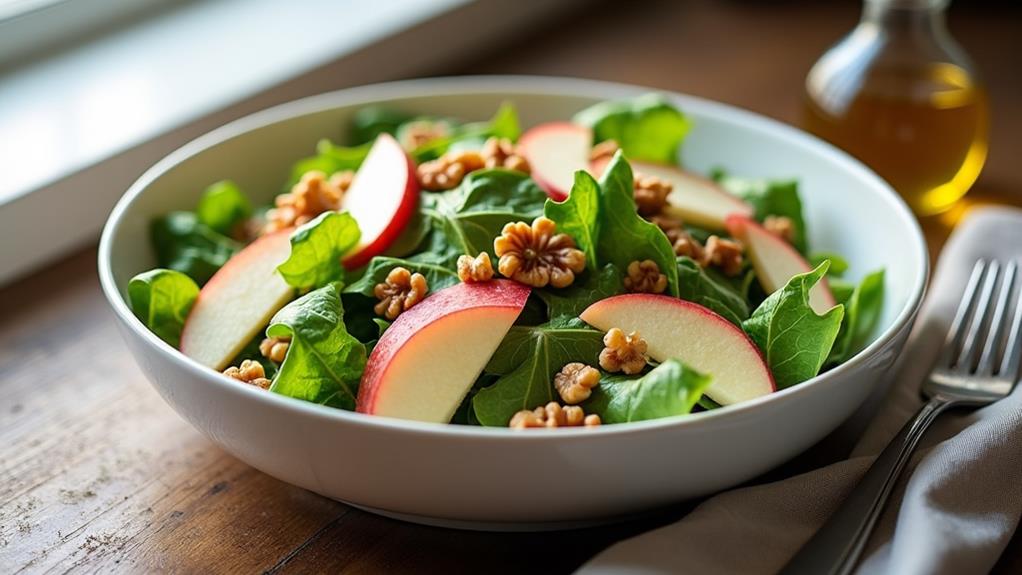Lavender pairs beautifully with fruits like strawberries, blueberries, and peaches, while complementing dairy in ice cream and butter-based desserts. You'll find it harmonizes with woody herbs (rosemary, thyme) and sweet spices (cinnamon, cardamom). Citrus zests, particularly lemon and orange, balance lavender's floral qualities. For beverages, try it in lemonade or cocktails with citrus elements. In savory applications, incorporate it into marinades or herb blends. These combinations will help you avoid the soapy notes many fear.
Lavender's Perfect Fruit Partners
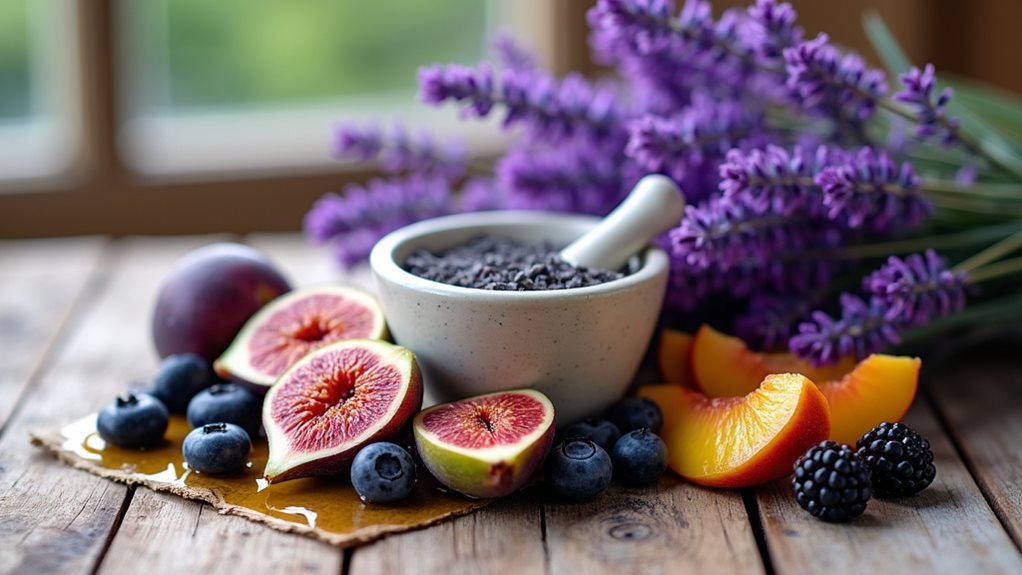
When exploring the versatile world of lavender in culinary applications, you'll discover that certain fruits naturally complement its distinctive floral profile.
Strawberries create a classic pairing in lavender desserts, while blueberries blend seamlessly in pies due to their natural sweetness. For lavender jams, consider using raspberries, which provide a tart contrast that balances lavender's sweet notes perfectly.
Berries offer the perfect canvas for lavender's aromatic charm, creating harmonious sweet-tart symphonies in every spoonful.
Peaches deserve special attention in your culinary experiments, as they combine beautifully with lavender in tarts and other baked goods. The pairing chart demonstrates that exploring unexpected combinations can lead to delightful culinary discoveries.
Don't overlook pears either; their smooth texture and subtle flavor create an elegant foundation for lavender-infused creations like the delicious Roasted Pears with Bleu Cheese and Lavender recipe that features Anjou pears baked with complementary ingredients.
Herbs and Spices That Enhance Lavender's Profile
To elevate your lavender culinary creations, you'll want to explore three key complementary flavor profiles.
Woody herbs like rosemary and thyme create a sophisticated foundation when paired with lavender, offering earthy depth that balances its floral notes. Our Lavender Powder has received consistently positive feedback for its exceptional quality and versatility in various recipes. Remember that English lavender varieties provide the sweetest fragrance for culinary applications, unlike their French or Spanish counterparts.
Citrus zest combinations, particularly orange peel, brighten lavender's profile while cutting through its sometimes overwhelming perfume character.
Sweet spice pairings such as cinnamon, cardamom, and nutmeg add warmth and complexity to lavender dishes, transforming them from merely interesting to truly memorable.
Woody Herbs Blend
Lavender's distinct floral profile transforms dramatically when paired with woody herbs, creating complex flavor combinations that elevate both sweet and savory dishes. Rosemary, sage, and thyme stand out as ideal companions, sharing not only garden compatibility with lavender but also complementing its distinctive taste.
You'll find these herbs thrive together in similar growing conditions—full sun and well-drained soil—making them perfect garden partners. These companion plants help create a vibrant color contrast when planted together in your garden. A light dusting of dried lavender combined with these herbs is sufficient, as excessive amounts can lead to bitterness or soapy flavors.
The culinary versatility of these combinations is remarkable. Try infusing oils with lavender and rosemary for a sophisticated dressing, or blend dried lavender buds with sage for an aromatic rub for roasted meats. For optimal flavor extraction, consider using a prep station technique to organize your herb combinations before cooking.
The piney notes of rosemary, earthiness of thyme, and slight bitterness of sage balance lavender's floral sweetness, creating depth without overwhelming your dishes.
Citrus Zest Combinations
The bright, acidic notes of citrus zests create magical transformations when paired with lavender, effectively balancing its potentially overwhelming floral qualities while highlighting its subtle complexity.
Lemon extracts particularly enhance lavender's delicate notes, while orange peel adds depth that complements rather than competes.
For maximum citrus benefits, combine lavender with lemon in invigorating summer cocktails like the Lavender Lemon Drop or infuse it into lemonade for an elevated twist.
Zest applications extend beyond beverages—try sprinkling lavender flowers on lemon bars or incorporating both into marinades.
You'll find chamomile, peppermint, and rose elegantly complement these pairings in teas and infused drinks.
For complex flavor profiles, add fresh mint or woody herbs like thyme to balance the floral-citrus combination.
The classic Lavender French 75 showcases this perfect citrus-lavender harmony with its combination of gin, lemon juice, lavender simple syrup, and champagne.
Incorporating lavender into botanical beverages like kombucha provides a refreshing dimension when paired with citrus notes.
Sweet Spice Pairings
Enhancing lavender's distinctive floral profile requires careful selection of sweet spices that complement rather than overwhelm its delicate character.
Cardamom stands out with its aromatic qualities, lending exotic undertones that elevate lavender in both savory dishes and floral teas. You'll find Saigon cinnamon adds warmth and depth to lavender-infused baked goods, creating complex flavor dimensions.
For innovative spice blends, consider combining cloves with lavender—their pungent notes create an intriguing contrast to the floral sweetness. English lavender varieties like Lavandula angustifolia pair beautifully with these spices due to their mild, sweet character.
Ginger introduces a welcome warmth that balances lavender's sweetness, particularly effective in cookies and cakes. Vanilla, whether in extract or bean form, intensifies lavender's natural character without competing for prominence.
When crafting your own lavender creations, remember that these sweet spices should enhance, not mask, lavender's signature profile. Using just a pinch of dried lavender is recommended as it's quite potent and can quickly overpower other flavors in your recipe.
Sweet Foundations: Honey, Vanilla and Lavender
When creating sweet culinary compositions, you'll discover that honey, vanilla, and lavender form a triumphant flavor trinity that elevates desserts from ordinary to extraordinary.
Different honey variations, from delicate acacia to robust buckwheat, provide distinct foundations for your sweet creations, while quality vanilla extracts contribute depth and warmth.
You'll find lavender adds a sophisticated floral note, but remember to use it sparingly to avoid overwhelming your dish.
Try infusing honey with lavender for a versatile sweetener that transforms yogurt, tea, or ice cream.
For complex flavor profiles, combine all three ingredients in baked goods or homemade candies—the vanilla balances lavender's intensity while complementing honey's natural sweetness.
These ingredients work equally well in savory applications, adding unexpected dimension to dressings and marinades.
Lavender in Beverages: From Refreshing to Relaxing
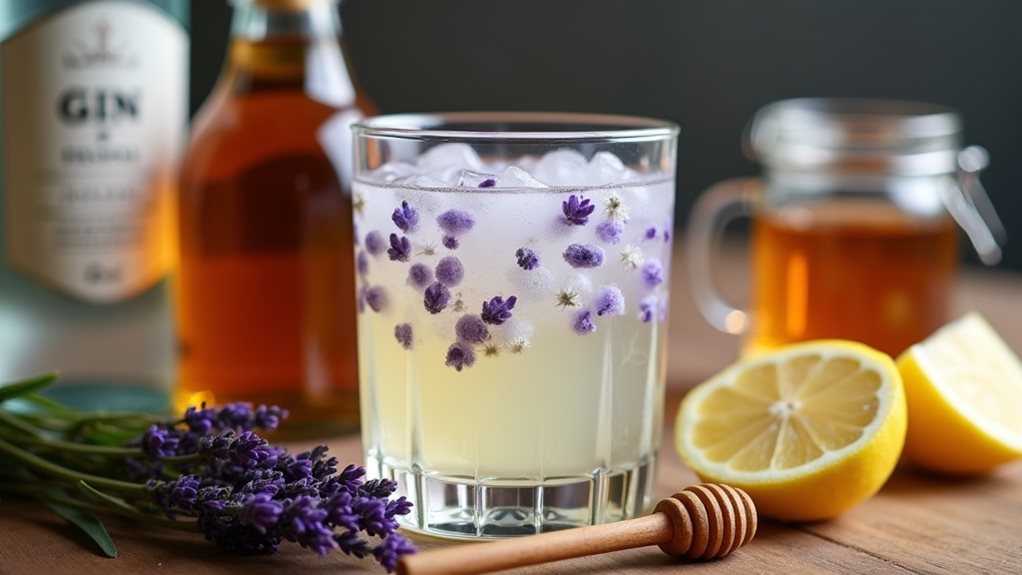
Lavender's delicate floral notes transform ordinary beverages into extraordinary sensory experiences, making it a versatile addition to your drink repertoire.
When creating lavender cocktails, pair this aromatic herb with citrus flavors like lemon or lime to achieve perfect balance, as demonstrated in classics like the Lavender French 75 and Lavender Mai Tai.
For your next gathering, try these crowd-pleasing options:
- Lavender Lemonade – Steep dried lavender buds in hot water, strain, then mix with fresh lemon juice and sweetener for a revitalizing mocktail or vodka-based cocktail.
- Herbal Tea Infusions – Combine lavender with complementary herbs for a soothing evening beverage.
- Springtime Spritzers – Mix lavender syrup with sparkling water and fresh berries for a sophisticated non-alcoholic option.
Dairy Dreams: Incorporating Lavender Into Creamy Delights
When you're ready to explore lavender's affinity with dairy, you'll find the floral herb transforms ordinary creamy treats into extraordinary culinary experiences.
Your homemade ice cream can reach new flavor heights with a subtle infusion of lavender, creating a sophisticated dessert that balances richness with delicate floral notes.
Butter-based products, from shortbread cookies to luxurious frostings, welcome lavender's gentle touch, offering you countless opportunities to experiment with this versatile flavor combination.
Ice Cream Adventures
Creating lavender ice cream opens up a world of sophisticated flavor combinations that transform ordinary frozen treats into extraordinary culinary experiences.
When you're ready to begin your lavender ice cream flavor exploration, consider using an ice cream maker for ideal texture and consistency.
- Combine lavender with peach compote for a delightful floral-fruit pairing that balances the aromatic qualities with sweet juiciness.
- Layer your creation with blackberry mixture for added depth and a stunning visual contrast.
- Incorporate honey and vanilla into your base for natural sweetness that enhances lavender's subtle notes.
Don't forget to carefully monitor your steeping time to control flavor intensity.
The perfect lavender ice cream requires balance—too much creates a soapy taste, while too little leaves you wondering what's missing.
Butter Bliss
The transformation of ordinary butter into a lavender-infused delight opens countless doors for elevating your culinary creations. By combining dried lavender buds with softened butter, you'll create a versatile base for both sweet and savory applications.
Try spreading it on warm scones or melting it over fresh vegetables for an unexpected floral note.
Experiment with different cream textures when incorporating lavender—from whipped cream lightness to rich buttercream density. Various butter variations work beautifully with lavender's distinctive profile: cultured butter provides tanginess that balances floral intensity, while unsalted sweet cream butter lets the lavender shine.
For maximum flavor infusion, steep lavender in warm cream before incorporating it into your butter mixture, allowing the aromatic compounds to fully integrate with the fat molecules. For a similar technique, consider how gradual broth addition helps infuse flavors throughout risotto while achieving the perfect creamy texture.
Creamy Frosting Finesse
Lavender-infused frostings transform ordinary cakes and pastries into sophisticated delights with their subtle floral notes and aromatic complexity. When crafting these creamy toppings, remember that flavor balance is essential—English lavender varieties offer the best taste profile without overwhelming your dessert.
For perfect frosting texture, try these techniques:
- Whip your butter and cream cheese thoroughly before adding other ingredients.
- Sift powdered sugar to eliminate lumps for silky-smooth consistency.
- Add half-and-half or milk gradually until you achieve your desired spreadability.
You'll find cream cheese provides an ideal tangy base that complements lavender's floral notes.
For visual appeal, consider using natural colorants like blueberry juice instead of artificial dyes, enhancing both presentation and flavor profile while maintaining the sophisticated character of your lavender creation.
Savory Applications for the Floral Favorite
While typically celebrated for its aromatic qualities in desserts and sweet treats, lavender's versatility extends beautifully into savory cuisine, where it adds unexpected depth and complexity to a range of dishes.
Try creating lavender marinades for chicken or fish, where its floral notes complement citrus and herbs like rosemary and thyme. The key is restraint—lightly toast the buds to reduce their perfumed intensity.
For an innovative approach, infuse lavender into oils for grilling or create pink Himalayan lavender salt to sprinkle over popcorn, roasted vegetables, or a perfectly cooked Ora King Salmon.
You'll find lavender particularly shines when paired with smoky elements or rich dairy components.
Don't overlook its traditional role in herbes de Provence, which brings authentic French flair to savory desserts and Mediterranean dishes.
For those following a gluten-free diet, incorporate lavender into your pastry recipes where the floral notes can enhance the binding agents and create unique flavor profiles while masking any unusual tastes from alternative flours.
Frequently Asked Questions
Can Culinary Lavender Be Substituted With Lavender Essential Oil?
No, don't use lavender essential oil in cooking. It's not food-safe and its extreme potency will overwhelm your dish. Stick with culinary lavender buds for innovative dishes where you can control lavender oil safety.
How Much Dried Lavender Equals Fresh in Recipes?
Ever wondered about the perfect lavender balance? You'll need to remember this essential dried lavender conversion: use 1 teaspoon dried for every 3 teaspoons fresh lavender measurement. They're not interchangeable without proper adjustment!
Does Lavender Pair Well With Chocolate Desserts?
Yes, you'll find lavender chocolate pairings create sophisticated dessert recipes. The floral notes enhance chocolate's richness while adding aromatic elegance. Just balance carefully—too much lavender can overpower your innovative chocolate creation.
Can I Grow Culinary Lavender at Home?
Yes, you can grow culinary lavender at home! Choose English or Munstead varieties for best flavor. Make certain ideal growing conditions with full sun, well-draining soil, and minimal watering after establishment for your innovative garden project.
Does Lavender Complement Spicy Foods?
Lavender can complement spicy foods when used sparingly. You'll find lavender spice creates an unexpected flavor balance in hot dishes – just use it lightly so it doesn't overwhelm the heat's intensity.
Final Thoughts
As you've explored these lavender pairings, you've opened a garden of culinary possibilities. Like the versatile bloom itself—which shifts from field to kitchen with grace—you'll find your cooking transformed through these harmonious combinations. Whether in sweet creations that echo summer's bounty or savory dishes that surprise the palate, lavender stands as both anchor and accent. Trust your senses, experiment boldly, and let this aromatic flower elevate your culinary artistry.

